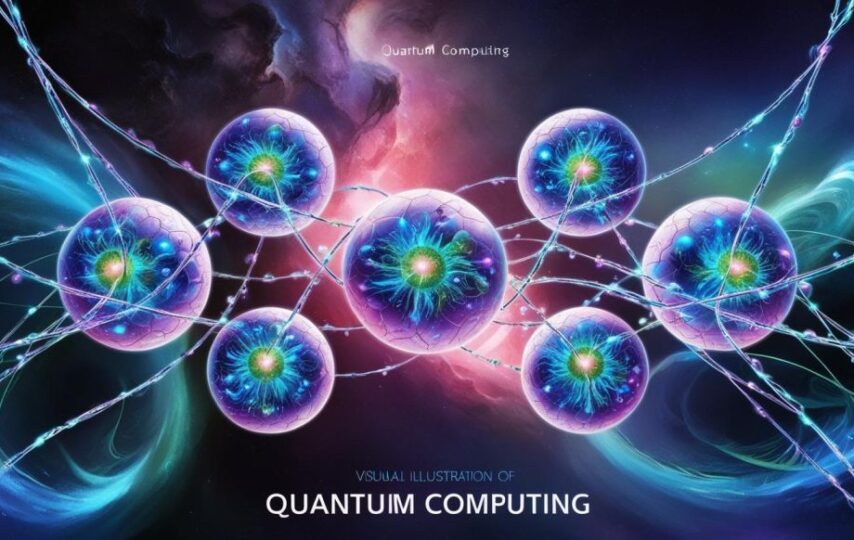Logical qubits, smarter algorithms, and better hardware are the keys to unlock what’s been out of reach for the old-school machines. It could change the game—industries transformed, problems solved—things too tough for the classics might finally give up their secrets.
Innovative Applications Transforming Industries
Financial Services
Quantum algorithms step into finance, sharpening the edge on portfolios, sniffing out fraud, and turning risk analysis into a precise art, not a gamble.
Logistics and Supply Chain
Quantum computing takes on logistics like a seasoned detective, untangling routes, fine-tuning inventory, and fortifying supply chains with sharp predictive modeling. The result? A system that runs smooth, tough, and smart.
Artificial Intelligence and Machine Learning
Quantum computing and AI are teaming up, a partnership that’s all muscle. Faster learning, sharper models, and breakthroughs in language and vision—together, they’re rewriting the rules and tackling problems that used to be untouchable.
Climate Modeling and Energy
Quantum simulations dig deep into climate puzzles, sharpening forecasts, fine-tuning renewable energy, and crafting smarter materials for storage and conversion. It’s the kind of breakthrough that could change the whole game.
Cybersecurity
Quantum computing shakes up encryption, cracking old methods while forging new ones. Quantum-resistant cryptography and key distribution promise security that’s bulletproof, while sharper threat detection keeps networks locked tight.
As the technology grows, so does its reach, set to revolutionize how industries tackle tough problems and make decisions. It’s a new frontier, wide open.
Economic Impact and Market Growth
The quantum computing racket’s heating up. In 2025, it’ll hit $2.11 billion, and by 2030, it could skyrocket to $65 billion, growing at a rate that’s enough to make a man dizzy. By 2040, it might add up to $850 billion in cold, hard cash to the economy, if the numbers hold.
What is Quantum Computing?
While your regular laptop processes information in binary, 1s and 0s, quantum computers accept their inner complexity with qubits that are both 1 and 0 at the same time due to something called superposition. Superposition allows qubits to hold multiple states, perform countless operations at once as a magician with too many balls. Entanglement links qubits together in a way classical bits can’t comprehend, providing answers at a record speed.
The Quantum Leap: From Physical to Logical Qubits
By 2025, quantum computing’s game gets sharper, replacing the unreliable physical qubits with the more reliable logical qubits. It is a move that is clearly called for, addressing two of the biggest issues of error rates and scalability that have otherwise held the field in check. Logical qubits, with their talent for quantum error correction, distribute the load across multiple physical qubits, constructing units that don’t bat an eye. The result? Quantum computers sturdy enough to solve real-world issues, now ready to play the real game.
While traditional machines are still counting on their fingers, quantum computers are doing their quantum warm-ups, stretching the laws of physics to solve incredibly complex issues. These subatomic superstars are finally ready to go from chalkboard speculations to real world stardom in 2025.
Challenges and Considerations
The future looks bright, but the road ahead’s full of potholes. The planet’s gonna feel the weight of this tech—its environmental toll’s something they’ll have to reckon with sooner or later. Then there’s the problem with security: quantum could break what’s in place now, and they’ll need a new kind of lock to keep the bad guys out. And talent? Not enough of it. They’ll need brains and steel to make it work.
Conclusion
So as the quantum computing steps into 2025, there is not so much question mark as to when this subatomic superstar will transform our existence. While the regular computers are still performing their base two dance, quantum devices are getting ready for their first professional performance on the industrial level. Of course, there are challenges—environmental issues, security issues, and a talent pool that is about as deep as a teaspoon— but the quantum train is not stopping for the bus. As the projections point to $850 billion by 2040, this is not just the next big thing in technology, but a revolution in computing. Well, strap in, because the quantum future isn’t just knocking—it’s already using a quantum key to unlock the door.
FAQs
Q1: In simple terms, what exactly is quantum computing?
It is like the difference between flipping a coin and spinning it. Whereas conventional computers deal with distinct states – heads or tails – quantum computers deal with spinning coins that are both simultaneously. Due to such peculiarities as superposition and entanglement, these machines can solve problems that would make your laptop cry. It’s like moving from checkers to 3D chess that is played out in several dimensions at once.
Q2: Should I be worried about quantum computers breaking all encryption?
The fact is that quantum computers are capable of breaking the current encryption methods, but cryptographers aren’t idle. You can be fully sure they are already working on quantum-safe encryption techniques. Think of it as cybersecurity it is now playing checkers while quantum computing is still crawling, so by the time a quantum threat is truly a threat, we should have great protection.
Q3: What’s the environmental impact of quantum computing?
It’s like trying to imagine a super fridge large enough to cool down your entire neighborhood – and that’s about how much effort it takes to get these quantum computers to work at their optimal near-absolute zero environment. The energy consumption is significant, but consider the flip side: The researchers believe that quantum computers could be useful for designing better solar cells, batteries, and climate models.


 Google's new Quantum Computer completes the task in 6 seconds that would have taken one of the world's best computers 47 years.
Google's new Quantum Computer completes the task in 6 seconds that would have taken one of the world's best computers 47 years. (@heyBarsee)
(@heyBarsee) 





